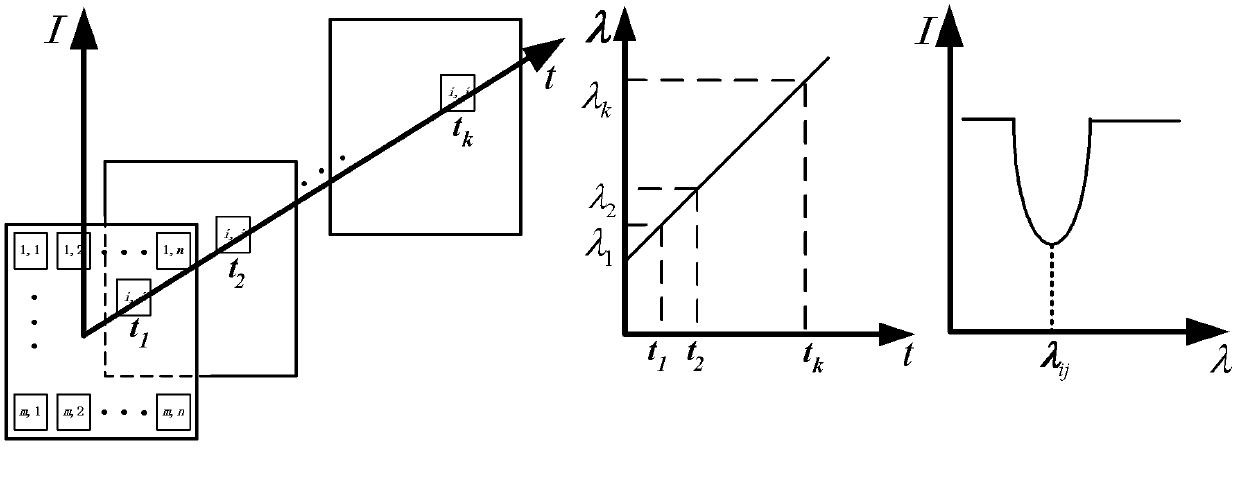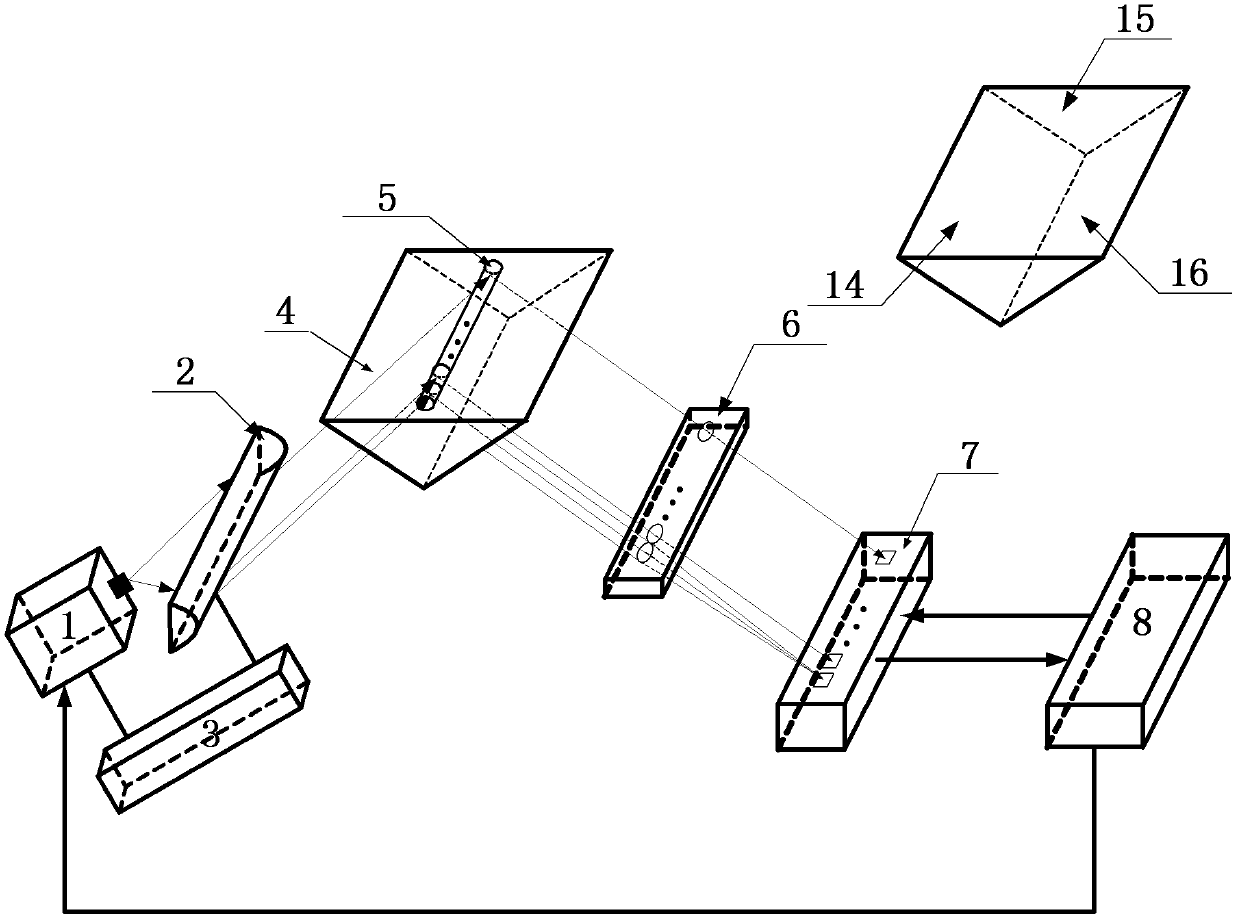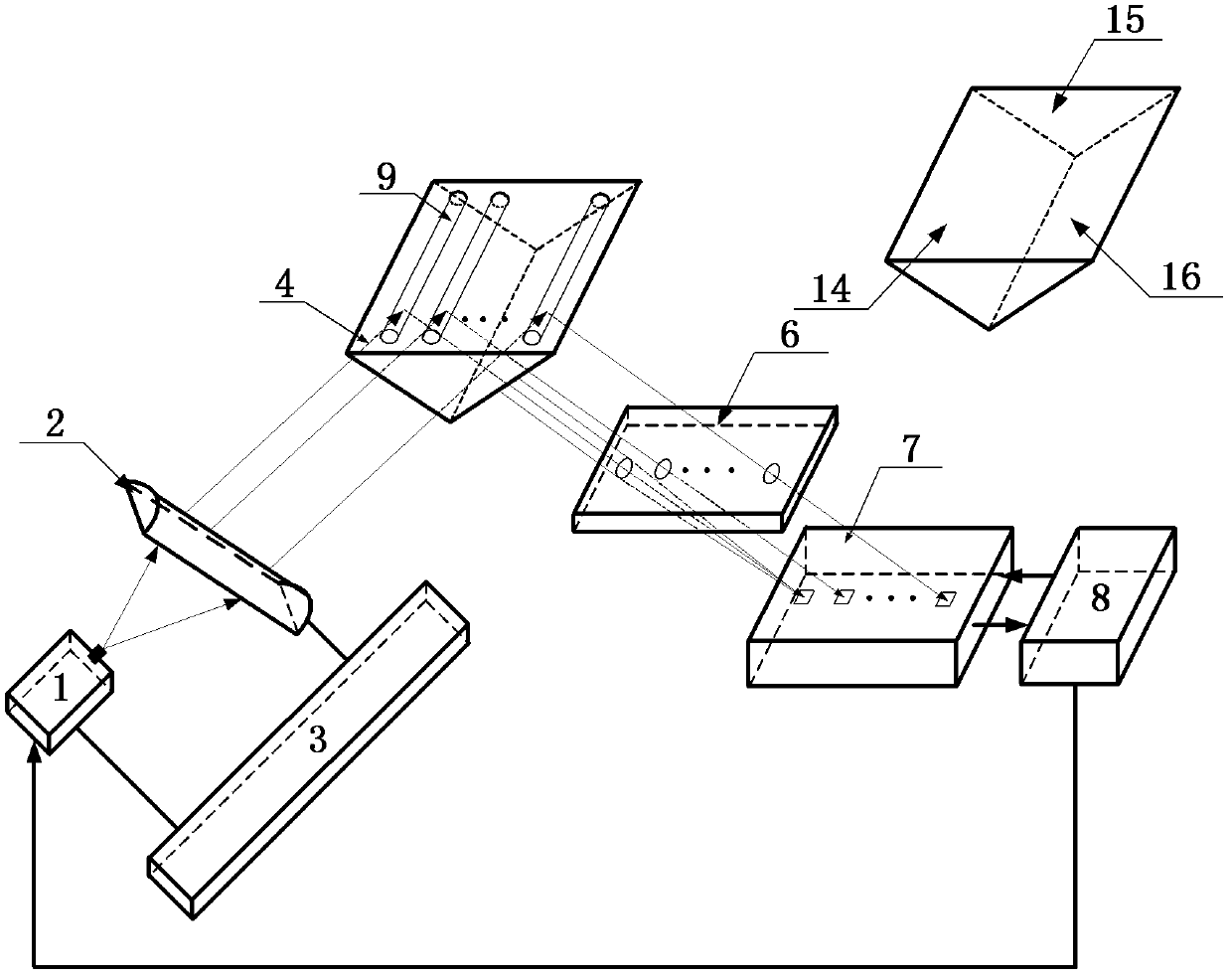Imaging optical microfluid sensing device and method thereof
A sensing device and microfluidic technology, applied in the fields of photobiology and chemical sensing, can solve problems such as the inability to achieve high-throughput rapid measurement, and achieve the effect of easy realization and mass production
- Summary
- Abstract
- Description
- Claims
- Application Information
AI Technical Summary
Problems solved by technology
Method used
Image
Examples
Embodiment 1
[0031] Embodiment 1: The principle of signal control and processing unit to detect the resonant wavelength of optical microfluidic resonant cavity
[0032] Each pixel unit of the m×n array photodetector is in one-to-one correspondence with each unit in the m×n optical microfluidic resonant cavity array, wherein m is the number of rows, and n is the number of columns. Such as figure 1 As shown, for the (i, j)th pixel unit of the m×n array photodetector, i=1, Λ, m, j=1, Λ, n, the signal control and processing unit continuously tunes the laser output wavelength, The output wavelength varies with time t, at t 1 , t 2 ......t k At different times, the corresponding light wavelengths are λ 1 ,λ 2 ,Λ,λ k , while tuning, synchronously control the array photodetector to record the image P corresponding to each light wavelength 1 , P 2 ,Λ,P k . The signal control and processing unit extracts the series of images, that is, extracts the (i, j)th pixel P for each image l (i, j),...
Embodiment 2
[0033] Embodiment 2: A sensing device and method using a one-dimensional optical-microfluidic resonant cavity array based on different positions of a single microtube along the axial direction
[0034] Such as figure 2 As shown, the sensing device includes: a tunable laser light source 1 is located on an incident angle adjustment frame 3 and is connected to a signal control and processing unit 8. The tunable laser light source is an erbium-doped tunable fiber laser with a wavelength range of 1525 to 1560 nm; The surface collimator lens 2 is located on the incident angle adjustment frame 3, and its plane part is perpendicular to the optical axis of the tunable laser light source 1; the reflective prism 4 is a right-angle prism, and the size of its reflective surface 15 is 24mm×36mm, and the incident angle of the reflective prism 4 The surface 14 is facing the convex surface of the collimating lens 2, and the outgoing surface 16 of the reflecting prism 4 is facing the linear mi...
Embodiment 3
[0037] Embodiment 3: A sensing device and method using a one-dimensional optical-microfluidic resonant cavity array based on multiple microtubes arranged side by side
[0038] Such as image 3 As shown, the sensing device includes: a tunable laser light source 1 is located on an incident angle adjustment frame 3 and is connected to a signal control and processing unit 8. The tunable laser light source is an erbium-doped tunable fiber laser with a wavelength range of 1525 to 1560 nm; The surface collimator lens 2 is located on the incident angle adjustment frame 3, and its plane part is perpendicular to the optical axis of the tunable laser light source 1; the reflective prism 4 is a right-angle prism, and the size of its reflective surface 15 is 24mm×36mm, and the incident angle of the reflective prism 4 The surface 14 is facing the convex surface of the collimating lens 2, and the outgoing surface 16 of the reflective prism 4 is facing the linear microlens array 6, and the re...
PUM
| Property | Measurement | Unit |
|---|---|---|
| refractive index | aaaaa | aaaaa |
Abstract
Description
Claims
Application Information
 Login to View More
Login to View More - R&D
- Intellectual Property
- Life Sciences
- Materials
- Tech Scout
- Unparalleled Data Quality
- Higher Quality Content
- 60% Fewer Hallucinations
Browse by: Latest US Patents, China's latest patents, Technical Efficacy Thesaurus, Application Domain, Technology Topic, Popular Technical Reports.
© 2025 PatSnap. All rights reserved.Legal|Privacy policy|Modern Slavery Act Transparency Statement|Sitemap|About US| Contact US: help@patsnap.com



